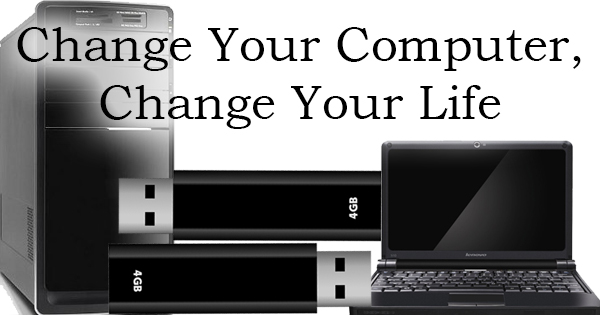
Happy 2017 everybody! I hope this new year is the best one yet. As is the case with every new year, there have been many proclamations of resolutions that will work out this year even though they didn’t last year. Or the year before that. Or…you get it. I’m always afraid to make a resolution for fear of setting myself up for failure, as despite my good intentions, I can never seem to carry any resolution out throughout the entire year. The thing about computers though, is once you decide to make a change and go with a new computer, there is no turning back. Once you experience the performance of a new machine, you won’t revert back to the prior model. Unfortunately, it seems so daunting to so many about how to make this change and transfer the files and programs you’ll need to use from the past to the future. Fortunately for those people, I wrapped up a massive new computer installation this weekend, so the tips of how to do this easily are fresh in my mind!
First of all, there is no such thing as having too much information. The job I mentioned earlier was for a busy office with people that know what they like and want their settings to be kept as closely as possible to what they had with their prior computer. Everything needs to look the same, everything needs to be installed and set up properly, and everything needs to be in the same place. You’re probably a little less demanding on yourself, but this is a good practice to follow. When you’re ready, fire up the old computer and get ready to take notes. My strategy is to take screen shots to make sure I don’t miss anything. It’s very easy to miss things in this process, and a picture really is worth a thousand words. Take a screen shot of the desktop. To accomplish this, press the “PRINT SCRN” key on your keyboard. This will copy what’s on your screen at the moment you pressed the key. Then open Word (really any word processing program, or Photoshop if you have it), and create a new document. Click “Paste” or the “CTRL” and “V” keys simultaneously and the image will appear. Save the document and you’ll have a reference of most of the programs installed on your computer. If you know you’ve heavily edited settings on a program you use often, feel free to take a picture of those settings as well. Another helpful information gathering step is to use the Belarc advisor. Belarc will tell you everything about your computer. It’ll tell you the hardware it has on board, in addition to the user accounts that have been created, and every single program that’s currently on your computer, along with the license keys that were used at the time of installation. You’ll want to keep those handy in case a computer ever crashes and programs need to be reinstalled. For a free download of Belarc, visit http://www.belarc.com/. Check the list to make sure you have the discs ready for any programs you’ll need on the new computer. Hold off on any programs that can be downloaded until you’re on the new computer. Finally, take notes of any screen savers you use (and how soon they’ll begin), what your screen’s resolution is set to, which printers are installed, and which web browser is the default.
The easiest way to transfer files from one computer to another is with a USB flash drive or an external hard drive. Beginning with Windows 7, Microsoft introduced the idea of Libraries. Windows 8, as well as Windows 10 have carried them forward. There are four libraries by default: Documents, Music, Pictures, and Videos. Not surprisingly, files of each type that are on the computer appear in the appropriate library. Insert your flash drive (or external hard drive) into an available USB port on the old computer. Click on “Computer” or the folder icon on your taskbar at the bottom of the screen, and click on the drive for your flash drive to access it. It’ll be something like Drive F and will be labeled according to the type of device you’ve inserted. Right click in an open area, click “New” then “Folder” and name the folder something like “My Old Computer”. Double click on the “My Old Computer” folder to open it. Now, repeat the process and create four new folders: one called “Documents”, one “Music”, one “Pictures”, and one “Videos”. Now, click on “Documents” on the left side of the screen. Left click and drag your mouse to select all of the files in Documents, then hold the CTRL key and press C to copy these files. Return to the “My Old Computer” folder, then find the “Documents” folder you created inside of it. Hold the CTRL key and press V to paste the files into that folder. Repeat the process for the “Music”, “Pictures”, and “Videos” libraries. When you’re finished, reverse the steps on the new computer, and your personal files will be transferred. Keep in mind that programs can’t be transferred in this manner, and that they need to be installed on the new computer.
If your new year includes a new computer, don’t fear change, embrace it. With a little preparation, moving to a new computer will be a seamless transition. If you don’t feel your up to the challenge, Finish Line is happy to be of service.
